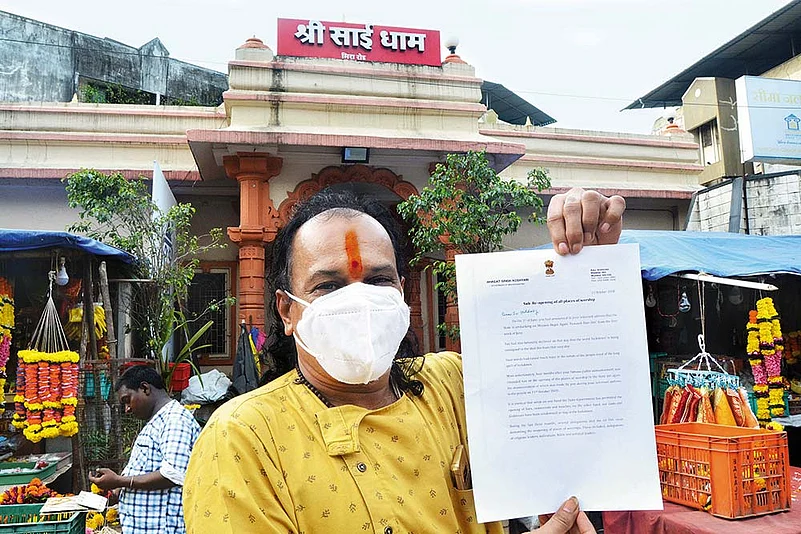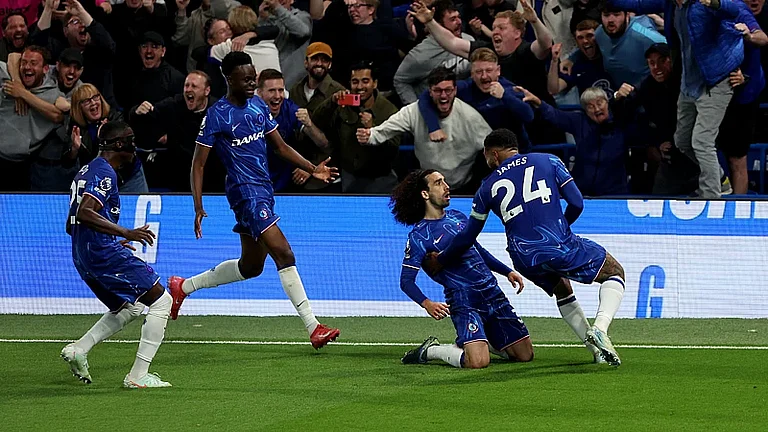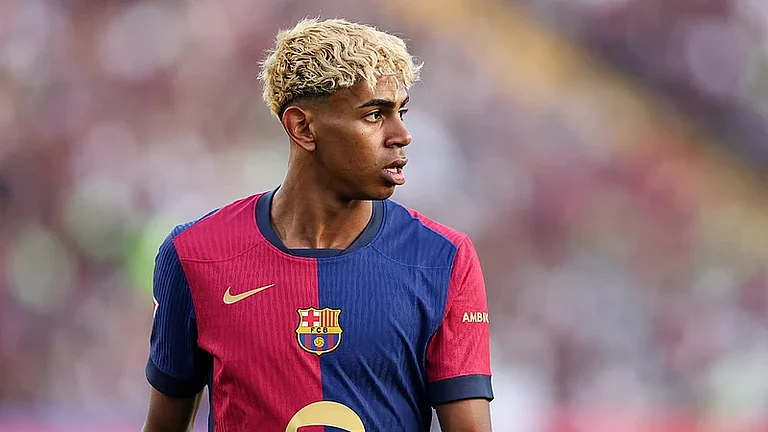Politics and religion together make for a potent potion. Add to it the festival season, impending elections and a pandemic, and you have a cauldron that’s brewing an unpredictable mix.
Concerned about people letting their guard down ahead of the festive season, Prime Minister Narendra Modi, in an address to the nation on October 20, struck a note of caution. “The lockdown may be gone but not the virus,” he said, exhorting people not to be complacent till a vaccine is available.
It’s the time for month-long festivities in the country that include Navratri, Durga Puja, Ramlila, Dussehra, Diwali and Eid—most involving community celebrations. Then there is Chhath puja, Gurpurab and Christmas to end the Covid-scarred year.
With the number of COVID-19 cases crossing 76 lakh, Union health minister Harsh Vardhan also urged people to celebrate festivals at home and to avoid public places. He cited the cautionary example of Kerala, saying the state—now witnessing a second wave of coronavirus cases—is paying the “price for gross negligence” after allowing unfettered Onam festivities in end-August. He said that Kerala’s adept, praiseworthy handling of COVID-19 in the initial months ought to serve as a good lesson for all state governments that are being negligent in planning for the pandemic in the festival season.
The citizenry, however, isn’t prepared for a dampener of spirits—thus the shrill demand for opening temples for religious gatherings from some parts of the country. ‘If bars and restaurants can be opened, why not temples’, goes the usual argument. As per guidelines issued by the Union home ministry, temples and other places of worship were allowed to function from June 8, with sanitisation and social distancing norms. Some states chose to open; others thought it prudent to wait.
Even if the spectre of a new, raging wave of coronavirus may curb untrammeled festive gatherings, it seems political activity cannot be subdued for long. Bihar assembly elections are a week away and, with six months to go for polls in Bengal and Assam, parties are not likely to let the festival season pass without making some noise. After all, festivals are an effective way of reaching out to voters.

Koshyari’s controversial letter to Uddhav Thackeray.
PM Modi is expected to address the people of West Bengal on October 22—the day of ‘maha sasthi’ that marks the beginning of Durga Puja—via a special webcast, ‘puja ki baat’. The local BJP unit is making arrangements to put up huge screens and live stream the speech at ten chosen pandals. However, with the Calcutta High Court declaring all pandals ‘no entry zones’ in an order on October 19, BJP leaders are trying to figure out a way of going ahead with their plan while following all social distancing norms. The HC has, however, agreed to review the matter.
Ever since the BJP, in 2014, identified Bengal as one of the states where it has to strengthen its presence—part of its Coromandel Plan—the state has been caught in a vortex of communal politics and Durga Puja has become an occasion for the saffron party to make its presence felt.
In recent years, the BJP has specifically tried to reach out to the Hindu votebank and expose Mamata’s alleged proclivity to ‘minority appeasement’. It has, in the past, been critical of the state government for imposing restrictions on Durga Puja immersion processions during Muharram.
The confusion over Covid, however, has left everyone snatching at an appropriate strategy. Mamata was for allowing community Durga puja. “We have decided not to stop Durga Puja festivities. Besides, everything else is going on. You can participate in Ramzan, Eid and Ganesh puja at home but…this is a community puja. Durga puja cannot happen staying at home,” the chief minister said on October 16. Mindful of the BJP’s designs, she also decided to support 37,000 community puja organising clubs with Rs 50,000 each so as to help tide them over the fund crunch they faced.
According to political analyst Amal Kumar Mukhopadhyay, Mamata could not have taken a decision to restrict Durga Puja. “She got trapped in the politics of communal appeasement she herself initiated. She started appeasing Hindus after realising that the allegation of Muslim appeasement against her had alienated many Hindus and strengthened the BJP’s support base. The sane decision this year would have been to restrict public festivities,” he says.
The BJP, surprisingly, has been critical of the decision. While the party has been demanding the opening of temples in Maharashtra, it wants people to stay at home in West Bengal. “Don’t take part in festivity this year. Perform the puja with devotion staying home,” Bengal BJP chief Dilip Ghosh said, even as the party continued to organise gatherings of thousands of supporters to protest attacks on its workers and the “politicisation of the state police”.

The chief priest of a Mumbai temple brandishes Governor Koshyari’s letter asking the CM to reopen temples in Maharashtra.
Keeping up with his programme of continually criticising the state government, governor Jagdeep Dhankhar wrote to Mamata on October 18, issuing “the last warning” to the TMC government. The BJP believes the governor is bound by the Constitution to keep the state government in check; TMC says that’s unconstitutional. BJP general secretary and central observer for W. Bengal Kailash Vijayvargia says rule of law has broken down in the state and people are looking at the BJP to provide an alternative. “We are standing with the people of the state,” he says.
Another government at the receiving end of a state governor, but for different reasons, is the Shiv Sena-led Maharashtra Vikas Aghadi (MVA) government. The outspoken Shiv Sena leader, Sanjay Raut, recently said that it seems that there are only two governors in the country—Dhankhar and Bhagat Singh Koshyari of Maharashtra—taking a dig at their proactive role as the Centre’s representatives in respective Raj Bhavans.
Koshyari has been under the scanner for using “intemperate language” in a letter to Maharashtra chief minister Uddhav Thackeray, asking him to reopen temples. “It is ironical that while on one hand the state government has permitted the opening of bars, restaurants and beaches, on the other hand our gods and goddesses have been condemned to stay in their lockdown,’’ the governor had written. Reminding Thackeray of his Hindu credentials, he mentioned the CM’s visits to Ayodhya and the Vitthal Rukmini Mandir in Pandharpur for Ashadhi Ekadashi puja. Then came the line that raised eyebrows even within the BJP: “I wonder if you are receiving any divine premonition to keep postponing the reopening of places of worship time and again, or have you suddenly turned ‘secular’ yourself, the term you hated?”
Union Home minister Amit Shah, in an interview to a TV channel, observed that the Maharashtra governor could have exercised restraint in his choice of words.
Clearly, the BJP has not been able to come to terms with losing Maharashtra to the MVA. Shiv Sena leader Priyanka Chaturvedi says that the governor’s letter was politically driven. “The country’s health minister is asking everyone to avoid large gatherings and visiting temples. The CM (Thackeray) is working on the world’s best practices. Maharashtra has faced the biggest brunt of coronavirus and we know how we have worked on it,” she tells Outlook.
Chaturvedi says the opening of bars and restaurants—which the BJP keeps raking up—is an economic activity, and it was part of the move needed to bring the economy back on track. Temples, she says, involves religious sentiments of people and it can be difficult to control crowds during a pandemic. She cites the example of the famous Banke Bihari temple in Vrindavan that opened on October 17, the first day of Navratri, but was forced to shut down two days later as 25,000 devotees turned up. “We cannot succumb to BJP pressure. People can see through the party’s politics,” she adds.
Chaturvedi also responds to the governor’s ‘secular’ barb. She says that Thackeray’s visits to Ayodhya and Pandharpur are a matter of his personal faith but as chief minister of the state, he has to do what is right for the people. She adds that he undertook both with utmost care. As per the original plan, an entire entourage was supposed to go to Ayodhya to mark 100 days of his government. “It was much before the lockdown was announced and the CM kept it small. While the Pandharpur yatra (in July) was cancelled this year, the CM went only with his family to offer prayers to Lord Vitthal,” she points out.
Chaturvedi then accuses BJP workers who protested outside Siddhivinayak temple of not following social distancing and other Covid safety norms. “We are still not out of the woods. It is this unsafe behaviour that contributes to the spread of infection.”
Incidentally, Kerala health minister K.K. Shailaja also blames protests by opposition parties for contributing to the surge in coronavirus infections in the state—the very second wave that the Union health minister blamed on Onam celebrations.
“Opposition parties, without any control, were out on the streets against the government since August. They violated protocols and created utter chaos for over a month, not even listening to the High Court. That contributed largely to the spread,” she says.
It all started in June-end, with opposition parties protesting the state government’s deal with data company Sprinkler. Even as nothing came out of it, another political controversy erupted in August after the customs department seized 30 kg of gold in a package camouflaged as diplomatic consignment marked to the UAE consulate. Both the BJP and the Congress took to the streets and held demonstrations, demanding the resignation of the chief minister.
They stopped the protests a week after court’s instructions and that too after many of them started testing corona-positive. Shailaja says that the government had warned about the danger, but it fell on deaf ears. “Now, many among those who participated in the protests and police officers on duty have contracted the virus. A protestor’s father died of Covid,” she says.
According to her, the protests also sent a false message to people that the government’s warnings are unnecessary. “When politicians got together and staged massive protests, it gave a sense of false security to people. That’s the actual reason for the increase in Covid cases. After all this, Kerala still managed to fight the disease in an effective manner. Otherwise, it would have led to more casualties,” Shailaja tells Outlook.
KPCC vice president V.D. Satheesan differs and says that death rates are low because Kerala has a robust health system. It’s not the achievement of the CPI(M) government but the work of successive governments. He says the surge in cases is because of increased testing, so that the opposition can be blamed. “What is the relevance of the opposition if we don’t agitate when there are serious allegations against the CM office,” he asks. There is no time or season or occasion for politics. Like life itself, it must go on.
(With inputs from Preetha Nair in Delhi and Snigdhendu Bhattacharya in Calcutta)


























